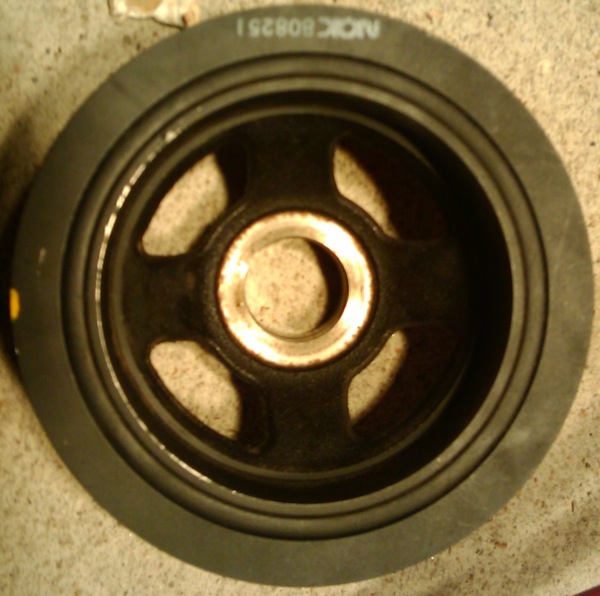Quote:
Originally Posted by wstar

Good point. Using the sharp multimeter probes made it easy to tell which parts were rubber and which were metal too, I think I understand the piece now. It wasn't built like I though it was at first. First, here's some pics from my cellphone:
Front view:

Side view:

Rear view:

The pulley is constructed from two separate pieces of metal which are not electrically connected, but it's not a ring on the back like you would think. The inner part of the pulley (the hub and spokes) is separated from the outer part of the pulley (the outer ring with the grooves for the belt). The circular groove you see in the front and rear views is the layer of (very stiff) rubber between the two parts, as highlighted in red here:

I still don't know if that helps draw any independent conclusion. It's not like the design of V8 harmonic balancers I've seen in the past. Those are generally a solid complete pulley, with a ring (picture like a very large washer with a very large opening) mounted on the backside of the outer diameter, separate from the pulley by a layer of rubber. This could still easily be either a real torsional damper or just an NVH-reduction device to me, given how little I really know about the subject. |
This is the exact same construction used in Ford V-8 applications. Its a injection molded rubber that is bonded between the inner hub and the outer inertia ring. I deal with the O.E. supplier for Ford's dampeners. That is indeed a harmonic balancer and should only be replaced with a pulley that also is a harmonic dampener, period.